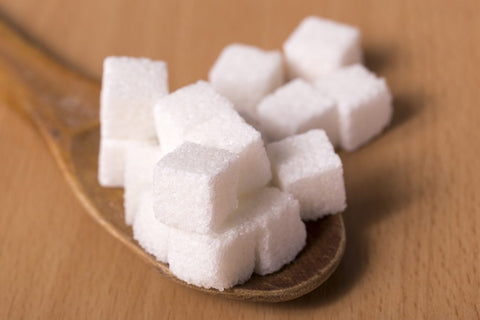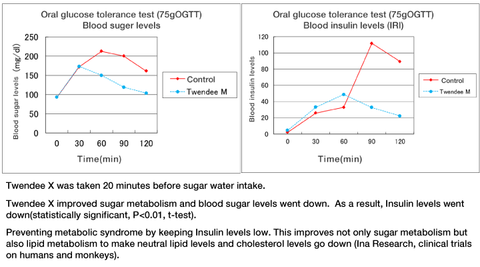Diabetes and Oxidative Stress
March 12, 2021
Diabetes and Oxidative Stress
Diabetes is a condition in which blood sugar or hemoglobin remains above a certain level. Blood sugar is the glucose in the blood. Blood sugar level is the level of glucose in the blood.

This glucose is necessary to sustain life. When carbohydrates (sugar) are consumed, they are digested and converted into glucose, which is then taken into the bloodstream and into the cells of the body, where it is used and stored as the main source of energy.
In other words, when we consume carbohydrates, our blood glucose level goes up, and when the glucose is converted into energy, our blood glucose level goes down.
In a healthy person, blood glucose levels are controlled at a constant level, but in a diabetic, blood glucose levels are not controlled by the body. This causes an abnormality in glucose metabolism, and it cannot be converted into energy properly. The hormone “insulin” plays a major role in this sugar metabolism.
Insulin is secreted by the beta cells of the islets of Langerhans in the pancreas.
These beta cells secrete insulin, a hormone that lowers blood glucose levels, when blood glucose levels in the body rise due to eating. Insulin is said to be the only hormone that can lower the blood sugar level.
Post-meal sugar metabolism and the role of insulin
Carbohydrates (sugar) consumed at meals are digested and converted into glucose. When the glucose is circulated in the bloodstream and the blood sugar level rises, the pancreas secretes insulin. When the blood glucose arrives at the liver, the insulin works and the mitochondrial cells in the liver take in the glucose and turn it into energy (glucose metabolism), which can then be used or stored. In this way, the increased blood glucose level after a meal is maintained at a constant level in the body, with insulin controlling how it is used.
In diabetes mellitus, the amount of insulin secreted is low, or even when insulin is secreted, it does not work properly, causing mitochondrial cells to be unable to convert glucose into energy and blood sugar to remain high above a certain level (hyperglycemia).
Diabetes mellitus is divided into two types: Type I and Type II, both of which are caused by insulin.
Type I is when insulin is not secreted at all. This is caused by the destruction of the beta cells in the pancreas due to some cause. Since the body does not secrete insulin at all, if insulin is not supplied from outside the body, such as through insulin injections, ketoacidosis can easily occur, which can be life-threatening.
In Type II, insulin itself is secreted, but the timing of secretion is poor or the insulin itself is not effective. The disease is caused by heredity, obesity, lack of exercise, and stress. Since the onset and progression of the disease is often slow, there are few subjective symptoms, and complications often develop when the disease is noticed.
It has become clear that the preliminary stage of type II diabetes is damage to pancreatic beta cells, which produce insulin, due to “oxidative stress”.
And when blood glucose levels rise too high, mitochondria are unable to convert all the glucose into energy and produce a large amount of free radicals, causing oxidative stress to rise.
Therefore, oxidative stress is extremely high in people with diabetes. And this oxidative stress is thought to cause various complications.
It is now known that atherosclerosis, a major complication of diabetes mellitus, is caused by the oxidation of cholesterol called “LDL” into oxidized LDL, which forms clots in the inner walls of arteries.
This oxidized LDL, along with oxidative stress, causes all the complications of diabetes, including arteriosclerosis, hypertension, kidney damage, peripheral neuropathy, and central neuropathy (Alzheimer’s disease).
High blood sugar levels are not the direct problem, but the oxidative stress caused by high blood sugar levels.
Promoting sugar metabolism without insulin
During the research of SUPALIV, a compound that promotes alcohol metabolism, it was discovered that sugar metabolism could be accelerated by changing the ratio of the ingredients. “Twendee X” was developed for the purpose of promoting sugar metabolism.
The following is the data of blood glucose levels measured by having the target organisms drink sugar water and Twendee X. (Oral glucose tolerance test)

This is a comparison between a sugar water only control and a Twendee M control that was given “Twendee X” 20 minutes before the sugar water was given.
The graph on the left measures the time since the sugar water was given and the rise in blood sugar levels.
In the case of Twendee M, the blood glucose level does not go up compared to the control, and it starts to go down after 60 minutes.
In the graph on the right, we measured the time after the sugar water was given and the rise in insulin levels.
Normally, insulin levels go up when blood sugar levels go down, but insulin levels did not go up significantly.
This means, in other words, that it has become clear that Twendee X speeds up sugar metabolism without using insulin by having the eight active ingredients work at key points in the sugar metabolism cycle in the mitochondria.
Differences in glucose metabolism
Based on the results of the above study, the compound “Twendee X”, which was found to promote glucose metabolism in humans, had the same effect in monkeys. However, there was no effect in mice or rats. It turns out that there is a difference in sugar metabolism between primates and rodents.
On the other hand, the antioxidant effect of “Twendee X” was confirmed in mice.
In other words, this research data suggests that it is possible to improve the symptoms of diabetes by lowering oxidative stress without directly lowering blood sugar levels.

